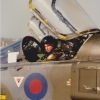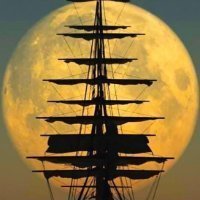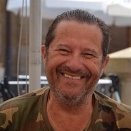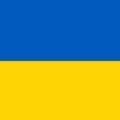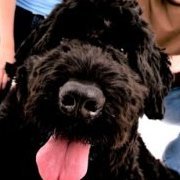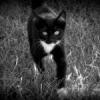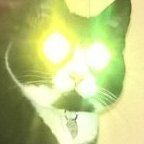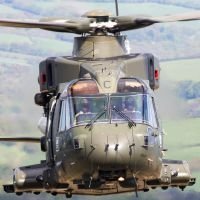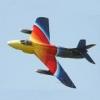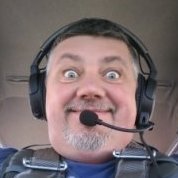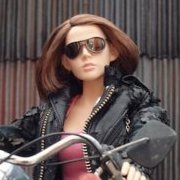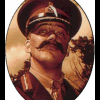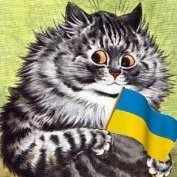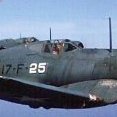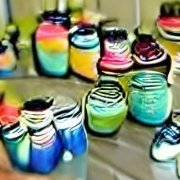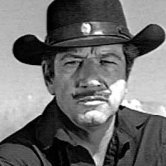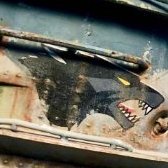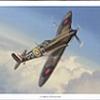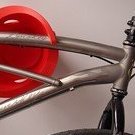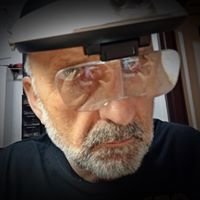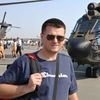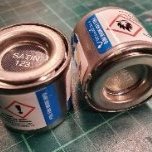Leaderboard
Popular Content
Showing content with the highest reputation on 25/01/23 in all areas
-
#2/2023 So, this is my dad´s last good old Hasegawa 109, only a few Eduard ones left in the stash. Markings taken from the Eduard Regensburg kit. Also Eduard seatbelts and cockpit fuel line used. Plastic rods and lead wire for the brake lines, EZ Line for the antenna wires, shortened the legs slightly to have a more realistic look. Painted with MRP RLM74/75/76. Some cracks in the underwing crosses but my dad decided to keep them. Build thread here https://www.britmodeller.com/forums/index.php?/topic/235118924-end-of-war148-messerschmitt-bf109g-10-mtt-regensburg-13jg27/ In 1945, IV.Gruppe of JG27was stationed in Germany and part of the Reichsverteidigung. The Gruppe was disbanded on March 31st 1945 and the pilots distributed to the rest of JG27. DSC_0001 by grimreaper110, auf Flickr DSC_0002 by grimreaper110, auf Flickr DSC_0003 by grimreaper110, auf Flickr DSC_0004 by grimreaper110, auf Flickr DSC_0005 by grimreaper110, auf Flickr DSC_0006 by grimreaper110, auf Flickr DSC_0007 by grimreaper110, auf Flickr DSC_0008 by grimreaper110, auf Flickr DSC_0009 by grimreaper110, auf Flickr DSC_0010 by grimreaper110, auf Flickr DSC_0011 by grimreaper110, auf Flickr DSC_0012 by grimreaper110, auf Flickr DSC_0013 by grimreaper110, auf Flickr DSC_0001 by grimreaper110, auf Flickr DSC_0001 by grimreaper110, auf Flickr DSC_0017 by grimreaper110, auf Flickr DSC_0018 by grimreaper110, auf Flickr DSC_0019 by grimreaper110, auf Flickr DSC_0020 by grimreaper110, auf Flickr DSC_0021 by grimreaper110, auf Flickr27 points
-
Hi All, My latest completion is Eduard's relatively new-tool Spitfire Mk.IIa, completed as P7840 of 340 (Free French) Sqn, based at RAF Turnhouse, Ayr in December 1941. P7840 was the thirteenth of seventeen Spitfires donated by the Belfast Evening Telegraph Spitfire Fund, and was titled 'Mountains o' Mourne'. Here's a couple of photos of the aircraft and the squadron (kindly provided by @Troy Smith - images for discussion only and will be removed on request). The scheme attracted me as it unusually has the aircraft in DFS with the earlier Rotol spinner and type A.1 roundels. In addition my Father-in-Law hails from Dromara which sits at the foot of the aforementioned mountains. 340 Sqn was formed in November 1941 as part of Le Groupe de Chasse IV/2 (Fighter Group 4-2) "Île-de-France", flying defensive patrols from Turnhouse until moving further south in 1942, at which point they re-equipped with Mk.Vbs. The scheme was therefore only applied to the aircraft for a relatively short time, and my light weathering of the model reflects this. Here's the WIP if anybody is interested: The model was completed mostly OOB (as it was Profipack that adds a few extras!), although with the national markings (mostly) with home-cut stencils. Like most Eduard kits the detail is superb, but with some unnecessarily fiddly elements - as an example the radiator assembly consists of 12 pieces including 2 PE radiator grills (a bit much for 1:48?). Anyway, on with the photos: Finally, a couple of group shots to show the evolution of the beast (from R-L Airfix Mk.Ia, Eduard Mk.IIa, Tamiya Mk.Vc, Airfix FR Mk.XIVe - all have their own WIPs and RFIs if anyone is interested, and still plenty of gaps to fill in the collection, although these have all been completed in the last year or so): I've very much enjoyed learning more about this interim mark of the Spitfire, and bringing this unusual scheme to life. Thanks for all who have added kind words and encouragement along the way - it has been much appreciated! Thanks for looking, Roger25 points
-
As I have presented here my previous G-10, one from WNF/diane, one from Erla, I had to complete the line with the Mtt production sampler. Eduard's kit with a shorthened u/c legs and Reskit wheels in the colourful scheme of a late war 13/JG27, thus the green band of the Defence of the Reich. Colors are the old fighter scheme of 74/75/76, used since stocks lasted. I did not used decals but for the stencils and used my home made masks. Sorry Reini for choosing the same deco as your father, a matter of hazard. Best regards. B29D11E4-2B4E-459C-BD62-C56BEEF35F1B_1_201_a by jean Barby, sur Flickr 5BB9457C-130F-4E1D-9F40-06AB6816D215_1_201_a by jean Barby, sur Flickr 2588CF5F-E039-4350-A807-742F8E759C7C_1_201_a by jean Barby, sur Flickr F4FE1070-A577-48F1-92AA-C46657764AC3_1_201_a by jean Barby, sur Flickr F4FE1070-A577-48F1-92AA-C46657764AC3_1_201_a by jean Barby, sur Flickr 4E1F3A0E-3365-401D-835C-E2CA6187C65D_1_201_a by jean Barby, sur Flickr E875FD36-450B-4F37-BAC3-83DAD45FC2A3_1_201_a by jean Barby, sur Flickr 916BF967-45CF-41EC-8930-13DF49EA68DA_1_201_a by jean Barby, sur Flickr 4A0448B9-4023-46A0-965E-D2B4FCBA1262_1_201_a by jean Barby, sur Flickr25 points
-
Seats : Quickboost , Wheels/ Intake covers: Phase Hanger Resin Missiles: Spares box Gun pod :Wolfpack Design Pilot's boarding ladder: Tamiya Rear boarding ladder: @xvtonker Decals :Airdoc Paint: MRP Mr Paint Base: Scratchbuilt by myself.19 points
-
Hi all and here's my first for this year, Grumman's model 303E which would become the F-14 Tomcat. Built for the Prototypes, Racers, Research, Record breakers, Special schemes megaGB here on the forum. The short build thread is here but to recap: Kit: Revell 1/72 F-14D converted Paints: Tamiya and Mr Hobby Acrylics Decals: Caracal for 'F-14 Tomcat, the Early Years' Mods: Earlier seats; modified wing gloves and fences with plasticard; earlier TF-30 engine nozzles; extended 'boat' tail; nose pitot from stretched sprue; removed lumps and bumps The #1 prototype made its short maiden flight on December 21st 1970 with Grumman chief test pilot Robert Smythe in the front and project test pilot William Miller in the back. On 30 December, on the aircraft's second flight, the aircraft was lost due to failure of a hydraulic pump which caused a total loss of flight controls. The crew ejected safely and the aircraft crashed short of the runway at Grumman's Calverton plant, New York. Revell_1_72_Grumman_F-14_prototype_build (10) by Dermot Moriarty, on Flickr Revell_1_72_Grumman_F-14_prototype_build (15) by Dermot Moriarty, on Flickr Revell_1_72_Grumman_F-14_prototype_build (16) by Dermot Moriarty, on Flickr Revell_1_72_Grumman_F-14_prototype_build (5) by Dermot Moriarty, on Flickr Revell_1_72_Grumman_F-14_prototype_build (19) by Dermot Moriarty, on Flickr Revell_1_72_Grumman_F-14_prototype_build (6) by Dermot Moriarty, on Flickr Thanks for looking, take care and happy modelling. Cheers, Dermot19 points
-
Hi All, I knew that I did not have far to go to finish the Mk.IIa, and so today has been about painting up fiddly bits, adding the undercarriage and rigging the beast (in this case I've added the antenna and the IFF wires, which I believe were present on this mark. So on that note, here's a few teaser shots: I've very much enjoyed bringing this unusual scheme to life, and learning more about what was very much a transitionsal phase for both the Spitfire and the RAF. Thanks very much to all those who have offered support and kind words along the way - thanks particularly to @Troy Smith and @wmcgill who both kindly provided photos of P7840. I shall post separately over in RFI, Thanks for looking, Roger15 points
-
Fairey Long Distance Monoplane - World Record Holder This is the 1/200 scale Shed Models, white metal kit built OOB and finished mostly using Alclad. In 1933, the Fairey LDM raised the world non-stop flight distance record to 5410 miles, flying from the UK to Namibia. Cheers14 points
-
Hi everyone. This is another Tamiya early production Tiger I, completely out of the box but using aftermarket decals to represent a vehicle from s.Pz.Abt. 505 on the Eastern Front in the summer of 1943. It represents a relatively new tank, hence the still neatly stowed track/tow cables, absence of damage and the light weathering. I replaced the commander with an Alpine resin figure. All the best, Ian12 points
-
Hi All Catching up on my builds from last year that made it into the yearbook, but haven't gone up on the site yet. This was the largest of the two ships I built last year, I decided to build it, mainly on a box-to-build size ratio, it's a whopper of a box for the size of the boat, so a net gain on space in the man-cave. I added on the Flyhawk etch set for a bit more detail, plus Hasegawa's own wooden deck for the kit. It's also the first time I've attempted to add any weathering onto a ship. Taking some lessons from doing so with the Armour I've been building, I went in with a less is more approach, just a light wash and some subtle streaking. I really like how much of an added dimension that even such a subtle weather gives the ship. Anyway, let me know what you think12 points
-
Design tweaked following the test fit and Version 2 now printed. I can't reasonably expect to get the fit between the kit and new TT rear cockpit/upper fuselage insert any better than that, and so I'll call that done. Remember (like the bit of the new nose I printed and test fitted) this test piece is just a blank to get the fit to the kit sorted and to set the dimensions. Now I've got to start on the new TT rear cockpit/upper fuselage design itself.11 points
-
Ok So. Insert outline test print, well, printed Calling it not bad. General fit pretty neat and tidy. Probably needs to be another 0.1mm wider from the mid point rearwards. It's the correct width nearer the front, despite what the photo below seems to suggest, indeed if anything perhaps 0.1mm too wide - but I think I'll keep it at that to give a bit for shrinkage and/or smoothing down after gluing. Rear cross section would benefit from a slight reshape to make the curve a little wider/flatter at the top. Front cross section needs to be a little lower and c. 0.2mm narrower at the top and and that will bring the curve in with it. Like I said; not a bad first effort from an analogue (scribed) input11 points
-
Evening all, My second completion of the year fresh off the bench this evening is Arma Hobby's stunning little Ki-84. Built totally OOB, as there's really no need to add anything as far as I can tell. AK Real Colour and Mr Color used for the main colours and Hinomarus, Tamiya and Alclad for the details, and Hataka Orange Line matt varnish to finish. Really enjoyed this one Arma Hobby 1/72 Arma Hobby Nakajima Ki-84 Hayate 'Frank' by Shaun Schofield, on Flickr Arma Hobby 1/72 Arma Hobby Nakajima Ki-84 Hayate 'Frank' by Shaun Schofield, on Flickr Arma Hobby 1/72 Arma Hobby Nakajima Ki-84 Hayate 'Frank' by Shaun Schofield, on Flickr Arma Hobby 1/72 Arma Hobby Nakajima Ki-84 Hayate 'Frank' by Shaun Schofield, on Flickr Arma Hobby 1/72 Arma Hobby Nakajima Ki-84 Hayate 'Frank' by Shaun Schofield, on Flickr Thanks for looking, comments welcomed as always Shaun10 points
-
Hi all, my first attempt of a high gloss finish. Not perfect, but i'm quiet satisfied. Kit made by Y-Modelle. Cheers Macki10 points
-
Quote: 'P’raps I should do as you say and ‘reach out’ (I bloomin hate that phrase - makes me cringe) As far as reach out goes:10 points
-
I'd say the deck is stacked in your favor. Now if only you'd done a bit of vac-forming too I could have said you're off to a blistering start. I'll just save that one for another day then. Anyone seen my coat?10 points
-
Hi all and here's mine, Grumman's model 303E which would become the F-14 Tomcat. The #1 prototype made its short maiden flight on December 21st 1970 with Grumman chief test pilot Robert Smythe in the front and project test pilot William Miller in the back. On 30 December, on the aircraft's second flight, the aircraft was lost due to failure of a hydraulic pump which caused a total loss of flight controls. The crew managed to eject safely and the aircraft crashed short of the runway at Grumman's Calverton plant, New York. The short build thread is here but to recap: Kit: Revell 1/72 F-14D Paints: Tamiya and Mr Hobby Acrylics Decals: Caracal for 'F-14 Tomcat, the Early Years' Mods: Earlier seats; modified wing gloves and fences with plasticard; earlier TF-30 engine nozzles; extended 'boat tail'; nose pitot Thanks to the mods for a great group build and for all your comments and encouragement! Cheers, Dermot Revell_1_72_Grumman_F-14_prototype_build (10) by Dermot Moriarty, on Flickr Revell_1_72_Grumman_F-14_prototype_build (15) by Dermot Moriarty, on Flickr Revell_1_72_Grumman_F-14_prototype_build (16) by Dermot Moriarty, on Flickr Revell_1_72_Grumman_F-14_prototype_build (5) by Dermot Moriarty, on Flickr Revell_1_72_Grumman_F-14_prototype_build (19) by Dermot Moriarty, on Flickr10 points
-
Hello all, As part of an ongoing project to replicate aircraft that the family flew/operated, I built the 1/72 Tamiya Vb. Here is the WIP thread: Very briefly, my great uncle Cecil Jolly flew with 87 squadron in North Africa. He was flying Hurricane IIc’s - and saw a fair bit of action. At the end of 1943 the squadron moved to Sicily, and at the beginning of ‘44 Cecil moved onto the Spitfire. He didn’t get much time on the Spit, but he flew one aircraft more than any other - ER310, had a dogfight in it, and indeed he sadly died flying that airframe on a training sortie, crashing into high terrain in bad weather. There’s some guesses made as to how to represent the aircraft. I have made a best guess (backed up with photographs, albeit not of this specific airframe) that the aircraft was still in desert colours and still had the trop air filter. While I know that 87 used the squadron code LK, I couldn’t find out what letter ER310 wore (his logbook only references ER310) - and so I used F after my eldest child. Finished in Tamiya acrylic paints, through a Mr Hobby procon airbrush, W&N Galleria matt varnish, and Tamiya weathering master for the weathering, finally getting to use ‘sand’ (and a small amount of dry brushing) I tried to replicate a well looked after aircraft that nonetheless has had a hard life in the desert. Without going OTT. A few mistakes along the way, various bits snapped off, some ruffled/split decals which I tried to repair/repaint, and having its ability to fly tested by a toddler which left me with quite a lot of last minute repair jobs, and here she is… I’m still fairly new to this, so it’s a long way from perfect, but I’ve learned a lot and look forward to learning more. Ben And here’s a few under natural light - amazing what a difference is makes to the colour tones…. Thanks for looking.9 points
-
My sixth build for this enjoyable GB. Sukhoi T4 Sotka, Amodel 1/72 fibreglass & injection moulded and painted with various shades and mixes of Alclad. Build - Too big for my normal photoography setup! Steve9 points
-
Lovely work so far. I'm keenly watching! As to previous comments, the Defiant did a lot more useful stuff than it's been credited, as it's always been seen as a failure during the Battle of Britain. But when moved night operations it found it's calling, becoming the top scoring night fighter during the Blitz. Some of the encounters are pretty hair raising, with engagements opened as little as 30 yards from their targets. Those pilots stalked their targets and got in close. The Defiant had it's 'killing time' in May 1941, especially during the raids on Liverpool and Manchester. But in 1942 after it was withdrawn from the front line, it saw it deployed in a different role - that of radar counter measures on Moonshine and Mandrel sorties. It started as the Special Duties Defiant Flight and eventually became 515 Squadron. What I like in this story is that Fighter Command began looking for the experienced Defiant aircrews, pulling in those ex Battle of Britain aircrew, and experienced air gunners, with some being pulled out of Bomber Command ( a lot of ex Defiant air gunners were in BC by this time ), and many of those air gunners were Gunnery Leaders having completed their GL Course at the Air Gunnery School. First CO was Sam Thomas who had been on 264 Squadron at the start of hostilities; notably he had evaded escape when he was shot down over the Dutch Biesboch on 13th May 1940. And to elaborate - Moonshine 'spoofed' German radars into thinking that a large formation was on it's way, and more or less made the Luftwaffe scramble fighters to engage aircraft which didn't exist. Apologies for the thread drift everyone!9 points
-
Good morning mates, First of all thanks to all those who spent some nice words for my wife who ‘s recovered even it it wasn’t easy. I haven’t surfed this topic for ages and hadn’t read some of those messages. Apologies for that!!! Back to business, Another project left on hold was the Canberra PR9, so , after months of inefficiency and thanks to the winter time, I felt the need to spend some time on plastic bits and share some nonsense with whom may like to read. Having too many projects half way…(or even less than half!!!) I struggled a bit choosing where to start from, then I went for this one. Later I concentrated on the Jaguars, but you may already have noticed that. I had several options to re-start with: the flaps’ and wheel bays’ detail, the nose interior with the detail for the camera operator or the tail and I opted for…the camera operator’s side windows!!! This area had been previously detailed, but I still had those holes I couldn’t stand, so I started by cutting a bit od clear sprue and polishing it on both sides, which will be the inside. I cut thit in half and glued the two rods into the round holes with the polished end inside. Once dry, I filed them down and polished the outside with fine abrhasive paper and a nail sponge. I repeated the same procedure with two more rods, flattened and polished on the inside first, glued then filed and polished on the outside. Then I moved onto the tail. The system is quite different from what Airfix proposed, but at the end of the day, it’s a lot of work to achieve something which will be hardly seen. May be by gluing the kit parts as they were and adding a small angle profile at the top, then re-scribing some panel lines , I could have achieved a result not too far from this… but enough with the “Ifs”, let’s see what I’ve done! I started by adding some material at the two sides of the fuselage, just in front of the cut I had done. I think the original parts by Airfix were too high (…or too low….) Then I added some CA glue and flour to create some material at the top to be shaped to match the fuselage. Understanding the real shape of this area is really difficult as the “ orizontal “ planes are angled up and that area is hidden in all the pictures I’ve seen. I had to zoom some picture of the machine in flight to get a clue. After several attempts, I got to this result, which I’m quite happy with. There’s a gap at the bottom which will be dealt with later, when I’ll glue a couple od shaped plates as in the real thing. Then I re-shaped the external part of the fletchings.(is fletching the correct word? After so much time I’ve forgotten most of the common words for aircraft parts!!!) Once happy with their shape, I glued them to the main unit, with an angle, to make the ensemble look more dynamic. I also cut and glued the stabilizers slightly offset, but then , after a better look at the pictures, I realized they move opposite ways and I re-positioned one of them., Of course these pics were taken before that!!! This is what it looks like, once in place. Now a couple of pictures which I took a loooooong time ago. I started this build from the rudder and forgot to mention it, so here is the modification I did to it. The rudder was re-shaped and the side lines partially deleted. Then a shaped strip was added at the top. I then concentrated on the tail bulge (please forgive me for not having a better name for it! I assume it’s some sort of sensor, but to me …it’s a bulge!!!) and added some plates around it. This is how fare I’ve gone and the components are just dry fitted. …and finaslly a comparison which shows another project I started during this long period of modelling idleness!!! This is it for now. Thanks for watching!!! Ciao Massimo9 points
-
Another iteration of my scrap yard. This diorama is a transient affair, set up on my work bench for photo sessions when I’ve something new to add to it, and then cleared away again. It would be nice to have enough space to leave it set up, but that’s not practical in my house. The additions which prompted today’s session are a Corvette Stingray, built from a very old Monogram kit, and a Jaguar E-Type, a brand new Norev diecast which I’ve just ruined. I’d already nicked the Corvette’s engine for another project, so it made sense to portray it as a non-runner. I’m currently working on a later Revell version of the same kit, which will be a nice shiny hot rod.8 points
-
Time to reveal my next build. Another Black Cat Models ship, this time from the U.S. Navy. I'me going to paint her in dazzle camo from when she served in Alaskan waters, so the main colour will be white with the camo 'Thayer Blue' (a very pale blue' So, without any more waffle, here is a camo plan I found online And on to the parts. Resin Hull, the detail will be more apparent once it's painted. All the parts are 3D printed. PE and brass masts etc. Work hopefully will commence tomorrow. Jon8 points
-
Ah, now that would be great aunt Lettice, a colourful Welsh character from the wrong side of Ysbyty Ystwyth...plenty of folks tried to put their finger on her back in the day but not many survived to tell the tale. It's as well you don't try Bill , you'll never be the same again (assuming you were the same to start with)... CC, no, no it's the air-conditioning coolant mix of 60% distilled water and 40% methanol carried by the Tu-22 that you need.....it wasn't called the Blinder for nothing. Never tried it myself but apparently it can give you wings (permanent kind).8 points
-
Ooh yes - good thinking. I am indeed a Mac-head (if it were up to me I would never touch a Windows machine again), and though I have read about Freeform I haven’t actually tried it yet. But those are the worst pictures of Ark Royal I’ve ever seen; the entire ship is obscured by a Defiant. Useless.8 points
-
8 points
-
Well... Let's say that this pic say it all..... Feaw gawd and dwead nauwt'n we've got pigeons, goats, stork and puffins The wabbit wewe sowely missed.... I must stop the Pythons.... CC8 points
-
Here is my attempt. Where it will lead me, only my carpet monster knows Here are photos of my carpet monster with its future meals: I will be using those paints: Keeping it kitchen-like I started with the following recipe: 1.5g of Titanium White 1.5g of Carbon Black 1.5g of Yellow Ochre 4.5g of Super Matt Medium After mixing it well, adding "professional" label and test-spraying - I am now a happy owner of a new bottle of RLM66: I have couple of more bottles to go still.7 points
-
Hi All. I thought it was about time to do a couple of maritime builds before giving attention back to my scratch build of the Fushimi Maru. So what do have? The subject will be the Type 42 Destroyer, HMS Sheffield using the 1/700 CybeHobby kit. First, the stuff: The box. I will be building her as the waterline version. The plastic. Instructions, decals and PE. This will be an OOB build but like life, things are bound to be either incorrect or missing and will need to be remedied. I know very little of this type, so if the 'collective' spot something please tell and I will give it some deliberation. Stuart7 points
-
Hi again. I guess this is the occasion I have been waiting for to clear out a coffin full of plastic (0.670 Kg net weight): I give you "The Hobby Boss Focke Wulf FW190A-5, #81802 in 1:18" - tada!!! Box art: Box content, the brownish plastic is Eduards FW190A in 1:48 for measure 😐 : The kit is impressive in size and the moldings are nicely done. But accuracy and detail went out the same door that size came in. Anyway - I have had it for a couple of years now - and I am still somewhat intimidated. I have been staring at pieces like the instrument panel, the seat, the engine (well front row rendition) and I have been thinking - In this size MY mistakes are only going to be to obvious trying to correct those. And even worse the kit 🤔 But Hey-Ho. Shake it off and get going, right? Let the fun begin Stay safe, stay sane and Happy Modelling! Zack7 points
-
Another boat in the pond. Blew the cob webs of this ancient Airfix boat kit 10 years back and unboxed the (un)holy relic. The quality on the details. was under par. The hull was out of proportion. The freeboard down to the keel was too high. The aft to short and the beam too narrow. Furthermore the rudders were far too big. I took it out there to my workbench to make a start. Laid the keel which was like squeezing blood out of stone. connection pins did not connect and the two hulls could not be aligned. Almost gave up. However, there was this Australian bloke at ATF who was watching the build. Super generous fellow who offered me a whole fret with photo etched parts. It would have all the gubbins for detailing the Bismarck. But he wouldn´t send me the fret, if I gave up now. Okay. Free PEs. Of course. I can push on. I solved the fitting problems with the hull and when the main deck came on I was on a roll. However, there was one slight problem. The fret didn´t come with railings. How do you remedy that problem? This is how. A pack of staples. Mad ay? Each staple would provide three stanchions (railing posts) Right. So I got the staples out of the box and snipped the buggers off in even lengths and when I had over 600 bits of staples, I used the needle drill and made indvidual holes 4 mm apart all the way around the main deck and the secondary deck on the subsections. That´s three hours cutting all the staples and five hours drilling all the holes for the stanchions. 600 stanchions were not enough, and it would take another 50 to complete the job. But the stanchions had to go into the holes and be fitted and straigthened so they wouldn´t end up looking lobsided. Okay. six hours gone. It´s 2 am and my wife had stopped asking me when I´m going to bed. Almost got it now. At crack of dawn and I´m finally finished. Halleluja! 650 staples, 650 holes, 18 painstaking hours to put all the parts together. I used elastic thread for rigging the railings. I was obsessed and arguably totally barmy to put myself through this exercise of selftorture. The railings are a rudimentary design, but I was so pleased that I did it anyway, and I had no regrets about it. It pushed my enevelope and I learned a lot. Such as not to make scratchbuilt railings from staples ever again! The model was brushpainted. Boot topping and camouflage freehand painted. Baltic camouflage down to a fraction and the black and white angled shapes faded with a thin coat of grey paint. Turret crowns with flat yellow. Funnel detailed with bars using stretched sprue. Ladders made for the turrets and some strips of plastic on the barbettes (Bruno and Caesar) to look like air shafts. Rigging with stretched sprue and weathering with drybrushing and Pigma Micron pen. Sorry for the long blurb. ⚓🤪7 points
-
Hello Friends, Here is my entry to this GB - Flashback No. KLH8919 in 1:48 from 1998. Not sure yet but if I manage to find good resource pictures the will be in Danish colors, a Search And Rescue aircraft belonging to the Danish Navy. Web rendition: Actual aircraft: Missing the box - but here is the content (sorry, need to fix my focus): Looking forward to this, Happy Modelling all! Zack7 points
-
Couldn't have put it better myself Bill....well I could, but they'd have to get me out of my straightjacket first. Oh yes, we don't want Darling's heart stopping rendition of 'Whoops, Mrs Miggins, You're Sitting On My Artichokes' to be mucked up by a sudden shift in the c of g due to sudden gusts of Baldrick induced turbulence... Almost done with the interior decor...have to draw the wavy line somewhere as we're running out of room. As it is I've had to cut the seating arrangement to a single art deco Green Leather Club armchair (although provision may be made for a few fold-aways for extra small/lightweight passengers). The new Victorian latrine has now been added which unfortunately reduces the headroom in the powder room quite considerably...still, with careful manoeuvring and a good tactical plan access can still be enjoyed by all but the loftiest combatant...An oval framed portrait of the late soon/almost to be, Lady Georgina Melchett will take pride of place above the pilot. A lamp stand and curtains will be next.7 points
-
Frog Fairy Delta 2 WG777 2nd Prototype, decals spares box and Xtradecal lettering, stripes are painted. Painted with Humbrol Acrylics 11, 15, 22, 33 and 53. Stand is sprayed with Halford's Aluminium7 points
-
Exquisite progress from the, “Legal Eagle”. 🦅 watch out that might just stick. 😀 You’re giving me pangs for the printing process. Not so much Tom foolery going on on my mirage. Maybe I need to pick something that needs modifying, or something from scratch again. 🤔 The “clear thinking” (great explanation to your methods) is evident in these first few steps. I’m enjoying this very much. Thanks for an lovely start to a cold Wednesday. J. 🤩7 points
-
This is I think my most recent pic. It's from last Dec when we picked up the latest addition to our family. Jimmy is 10 weeks old in the pic. He's a rescue from northern Manitoba so no idea on his breed. Here he is currently at 111 lbs. Our older dog Zoe passed in July last year. She was almost 14. Here she is waking our cat Sunny. If not for her, we most likely wouldn't have gotten Jimmy as she turned my wife into more of a dog person as she's primarily a cat person. Thankfully Zoe liked cats too. Sunny likes to keep me company at the bench. I'm amazed I don't have more cat fur in my paint jobs. Lastly, our other cat is Fursnake. Guess what Fur's favourite plane is: Carl7 points
-
Thanks everyone. I found this build with all the weathering https://www.lesmaquettistes.com/t572p250-sukhoi-t4-ou-sukhoi-sotka Took him four years........ I had to take a break from this due to work and family stuff getting in the way but it's finished now. The decals cracked up in several places so lots of piecing them back together. I'll get some photos in the gallery but here's one as a teaser! I've really enjoyed this build and the GB, thanks to everyone for making it so good. Steve7 points
-
My first MFH made a few years ago. I love him. I love Fangio...;) IMAG3391 by Tomasz, on Flickr IMAG3428 by Tomasz, on Flickr DSC_0644 by Tomasz, on Flickr DSC_0645 by Tomasz, on Flickr DSC_0662 by Tomasz, on Flickr DSC_0666-crop by Tomasz, on Flickr DSC_0690 by Tomasz, on Flickr IMAG3390 by Tomasz, on Flickr IMAG3412 by Tomasz, on Flickr IMAG3418 by Tomasz, on Flickr IMAG3432 by Tomasz, on Flickr6 points
-
Let's continue with the completed planes. It is a Mirage F.1 from Airfix. I worked on an airplane that was part of the Jordanian Air Force. An old Airfix model, but I am very grateful for the work. I'm happy with the end result, so I'd like to share the pictures with you all. Here's the picture . Enjoy .6 points
-
Here's the cockpit now, although it's only pushed together to take the pics, as I've still got a bit of work to do on it. The instrument panel is a decal, and as I suspected it's an Eduard print, so the carrier film could be removed easily. I experimented with removing it with Tamiya tape, and it worked perfectly. and an overall shot6 points
-
Just popped along to see what all the fuss is about. I see now, some people have lost their marbles 😂 Hope that piano is fixed down, I got told off for fitting a luggage rack in my microlight without the proper paperwork!6 points
-
Well we all know its difficult to get on the wrong side of Ysbyty Ystwyth, so if its all the same to your your generalship perhaps we should let her slide back into relative invisibility... But of course with the Melchett dynarsty relative invisibility is a terminological inexactitude since she herself was often seen wandering lonely as a flock of blooming sheepseses in the hills above Strata Florida. Any road up, nuff said.6 points
-
I had wonderfully sensible plans for this GB. Make a nice ship, OOB, don't get get carried away with detail, research, aftermarket. If the stars aligned and it actually got finished on time, maybe even make two: It's not going well Andy6 points
-
No theme to this post, just random updates.. First I made a new source discovery, WW2 Photo Album Series number 17, E-boats and Coastal Craft by Paul Beaver. Some cool new images I'd not seen before. Amazing that after 9 months I can still discover new pictures, below a few interesting views An overhead view of the engine room casing and wheelhouse, great shot if a little covered in netting This confirms my belief that the open bridge area was planked. Other things to note here are the absence of the main mast, the ensign staff and most importantly (for me) the two bulbous vents on the rear of the engine room casing. These are obviously shown on the dock-yard pictures but I'd not seen them on the later war camo images so I thought they'd been removed. Well, here they are, so I've made them, picture later This overhead shot love overhead shots...) of a late war R25 with gun shields and a central gun position shows the triangular camo shape on the bridge did not extend to the skylight running along the front of the wheelhouse and is reflected on the hatch shield, all decisions I'd made The RF direction finding aerial on the front of the wheelhouse roof seems to have been added to some vessels towards the end of the war (in front of the identification flag), I'm personally not including it but its worth knowing about Lastly, the best picture I have of a sweep winch in action, this model is very close to the one I've built from the drawing I found. I think this picture is early war as it still shows the full mast which later war vessels don't ship Anyway, talking about the winch, here is a shot of my winch getting its first two cables These are Beadalon 49 strand beading wire 0.021 inch dia (which is exactly 1inch scale). You can see the printed packers that reduce the amount of wire I need to wind around the hub. Here is the winch resting on the deck. Ignore the weathering, it looks terrible in this shot, more work needed on that steel deck. The lines in the drawing I have guide through shackles, they will be terminated with a wire loop much later Sometimes it's nice to just make something from bits of brass. Here are the anchor winch handles, checking the fit. They are stowed on the rear face of the breakwater, forward of the skylight And here is the anchor winch, anchor and chain stopper installed. I'm getting a bit more adventurous with weathering Here is a before and after shot of the Flak RUL, too much perhaps, still I like it Last part of this update, the signalling searchlight. The actual projector is printed and really, I pushed the detail too far. It's very fragile (3 broke in my clumsy fingers) and the detail has the danger of showing up other parts of the build But the real challenge was the legs. These could have been printed but then they wouldn't last through to the RFI thread... So, brass it had to be, 0.7mm dia. This is the fourth attempt, only two horizontal braces, the other two I just couldn't work out how to solder or glue in place without ruining what I'd done to that point, hence the 3 scrap ones. Picture wiht better lighting. This is temporarily mounted on a brass plate that has holes which are identical spacing to the previously fitted mounting tubes on the roof (0.9 mm tube, 0.7 mm ID) that the legs slide into. Note the power cable running down the leg, brass wire from a wine bottle, don't through that stuff away, its really useful. In the background a little more weed detailing has been added to the waterline. Oil stain to come More random updates in a couple of days Cheers Steve6 points
-
Engine finished. There are some imperfections, but I struggled hard with the tiny PE parts: Next time I have some black in the airbrush I will add some stains on the exhausts. Apart from that I leave it as it is. Cockpit and fuselage next. Volker6 points
-
Thanks gents; I should reiterate that all I did was varnish the Red Fox printed IP then put some Kristal Klear in the dial faces, what you see is what Red Fox provide. Speaking of Kristal Klear in the dial faces; it worked (but sorry about the blue cast to the photo): Thanks James Wee Oskar is now finished and installed in his office: As you may notice I have glued the joystick handle to his hand, rather than gluing the base to the floor, which sort of gives the game away that I glued his arm in the wrong position... however I'm confident that as long as I keep quiet about it no-one will notice and once the fuselage is closed up and the cockpit canopy on it will be impossible to tell and in any case I will just deny everything Which brings us neatly to the end of Stage 1 of the instructions. Next, in a shocking plot twist, the action gravitates to the propeller! See you there I hope Cheers, Stew6 points
-
from https://boxartden.com/reference/gallery/index.php/Camouflage-Markings/British-Aircraft-in-USAAF-Service Apologies if stating the obvious, has anyone asked the Americans? I'm not sure what I'd start, perhaps the https://www.americanairmuseum.com has DR945 https://www.americanairmuseum.com/archive/aircraft/dr945 He can be busy, but @Dana Bell knows a thing or two about US archives. You may get lucky, it's the sort of oddity that I think would amuse Dana. One point you maybe on the right track is the alphabet as in U being followed by V? Just a thought. probably fighting talk with @AndyL posting here. AFAIK the Defiant was OK as a nightfighter, and must have been reasonable enough as a target tow to have been both converted and built on one specifically , as plenty were used for that, as well as Air Sea Rescue type. Fascinating project @Fritag6 points
-
This morning, I sprayed a coat of Quick Shine Multi Finish Floor Finish since I no longer have any Future Pledge floor stuff..... and there is no way I am going on eBay and paying anywhere from $40 to $100 to some rip off artists to buy a now out of production bottle...... This stuff, first time I used it was today, I first tested it on an old kit, then found that a few light mists followed by a heavier coat using 0.5 airbrush at 15psi and 3" distance, works absolutely superb. It also dries to the touch in about 2 mins. So that meant I even got to decal the blue spit this afternoon...... blimey..... I like this stuff. Now I missed the memo last year that said Future Pledge was being discontinued. I had decided to go the way with AK Gauzy products......... ... screw that. This QSMFFF 64oz bottle sells for $13. It smells like, looks like, feels like and performs just the same as the Gauzy stuff if not better. The big difference is that AK charge you $10 for 100ml (about 3.6oz).... so that means AK costs $189 for 64oz. Get real folks AK are ripping you off big time. The main decals are fine but the stencils were different, very fragile. I need to do some finishing on the starboard wing walk by the tip.... amazing what you see on a photo compared to the naked eye. The Yankee plane has its Sky undersurface, also now coated with QSMFFF and the top surface Slate gray (not yet glossed). I'm glossing it just now just to test out this new product and how well it deals with me masking the lower surface in prep for the upper.6 points
-
I see enough needles when I go in for my monthly infusions (next one is this coming Thursday). I try to stay away from them at other times! But you are right, that would look super cool. ***** More photoetch - here is what goes on the bottom of the slats: The PE is not yet glued to the slat. It should look better than just the unadorned plastic of the slat. Whether this is accurate or not is anyone's guess. I haven't found a real good photo yet, but some not-the-best photos seem to show the lightening holes. The fuselage and wings are joined. You can also see that I've started work on the seams, but the fit is really good so not much work is required. If I wanted to sand more, I don't think I would need any filler at all. I also started re-shaping the bottom of the nose. The kit has it too flat - it should curve up more towards the front. Compared to some drawings prepared by Douglas, it is not possible to achieve 100% accuracy by doing this. I would run out of plastic. The kit really needs a complete rhinoplasty. However, I think that it will look better with the additional curvature I can add to the bottom of the nose. The only picture I took prior to beginning to sand are the sprue photos in my first post. Once I get the curvature where I want it I'll try to post some before and after shots, maybe along with a photo of the actual aircraft taken from a similar angle (if I can find one). As you can see, I crossed the Rubicon and cut out the flaps. I am going to see what the PE looks like when it's folded, but I suspect that @Fritag's idea of using card stock for the top flap may be a more structurally sound approach. I believe the these acted as split flaps, so the upper panel could hinge upwards acting as a spoiler. I don't know if upper and lower could open at the same time. I need @Tailspin Turtle's expertise. Cheers, Bill6 points
-
So. Yes Bill. Or to put it another way, the 'elephant's foot' is a characteristic of the first several (bottom) layers of the print on the build plate. The bottom layers of a print have longer UV exposure times than the main print layers in order to ensure adhesion to the build plate and this causes the layers to be a little larger in cross section (don't know exactly why - but it does). So if you print the part directly onto the base plate then the 'elephant's foot' effect can mar the print. If you print with supports from a base or 'raft' then any elephant's foot effect will be on the base/raft and not the print proper. Yes, but then 100 pages turned out to be just the amuse-bouche Ha. Momentarily only. Now that is good to hear old chap. At least it's good to hear if that's how you want it. I wish I'd never started this comment... Excellent memory to have. Ha. Once the trauma (to the late middle age brain) of getting acquainted with Fusion has passed it's quite relaxing to do virtual model making. At least you're not subject to the stress of the 'one slip of the knife/saw/scriber/brush etc. and all that work will be ruined' syndrome Interesting. Painted in 6 squadron colours. Thanks for your scholarship Andy. I guess I won't bother to contact MB then. It's a shame that DR944's codes are unknown and probably explains why it hasn't fund its way on to any decal sheets (AFAIK) as I guess the shark's mouth would be an obvious attraction to decal manufacturers. I'm still attracted to the idea of doing DR944 as opposed to DR945, but I may think again and take the easy way out. I suppose if known one knows DR944's codes I can't be definitively wrong if I make a stab at guessing them. The best photo I've seen of of DR944 is from a similar angle to one of DR945. Viz: DR945 DR944 Which seem to me to be consistent (or at least not definitively inconsistent) with same or similar overall paint scheme and, as ringed, you can just see on DR944 what iI interpret as being one of the points of the fuselage star and the bottom of the code letter, in the same position as on DR945. My superficial understanding is that the USAAF 326th BG (which operated the 11th CCRC which used the 2 Defiants) used the codes JW (according to Google) so it seems a reasonable assumption to me that DR944 would also carry the squadron codes JW. The photo of DR944 suggests that the lowest part of the individual aircraft code is an inverted triangle which to me suggests a 'V'. Hence I'm minded to infer that DR944 was JW-V when with the USAAF. That's a lot of assumption and inference and not a lot of evidence; so I'm obvs. willing to be corrected and I'm not yet sure it's sound enough reasoning to proceed with. Anyways. Having satisfied myself that the new nose interface would be a decent fit to the kit it was time time to rough out the interface for the rear fuselage insert. Comparing the F Mk I and TT Mk I plans etc. suggest that the rear fuselages are the same profile for some distance forward of the tail and so by reference to panel lines on the kit and plans I cut down the fuselage thus: And using a mixture of scans from the cut down fuselage and plans as canvases I sketched the side profile of the insert: I then printed out a crude block of the side profile to check the sizing with the cut down fuselage: And with what I found to be a pleasing interface between the digital and analogue I scribed the base, front and rear cross sections onto the printed block: And then scanned each of the sides of the block to use as canvases to sketch the insert cross sections thus: And so produced (yet) another test print to see how well it will fit to the kit: And that is printing away in the Mars 3 as I type. Result later. I'm taking a bit of time over these initial steps because I want to make sure the printed replacements/additions will be a good fit to the kit before spending any time on the detail of the new sections. It's obviously easier to make corrections to the fit at this stage. And I'm frankly more concerned to make the new part fit the kits existing profile/cross section nicely than conform perfectly with the plans and not fit the kit! Although the differences between the kit and ther plans are pleasing small in the areas I'm working on anyway.6 points
-
6 points
This leaderboard is set to London/GMT+01:00


